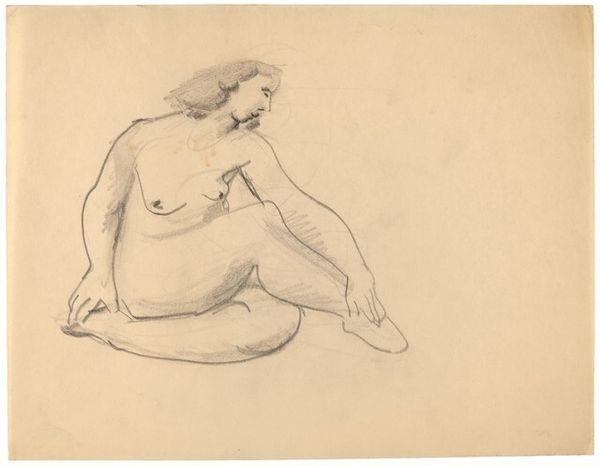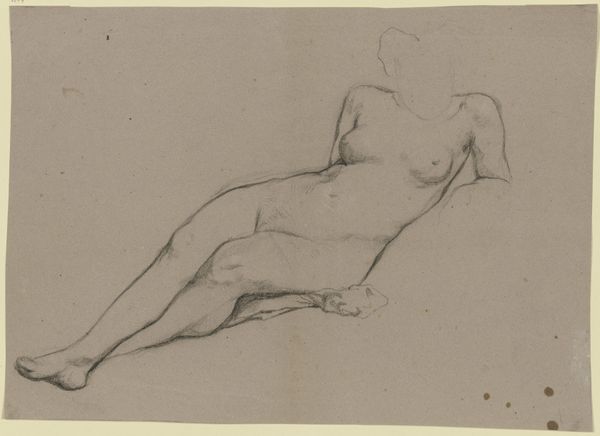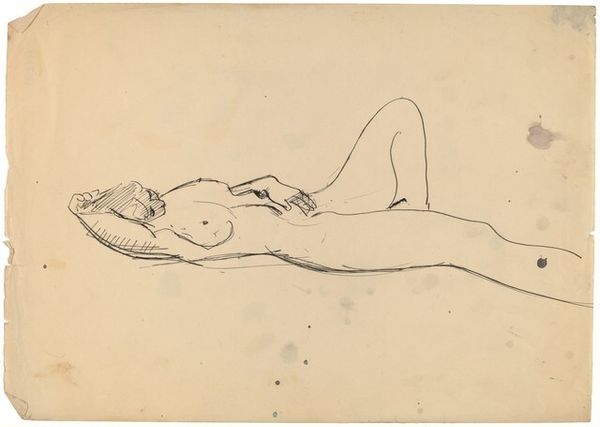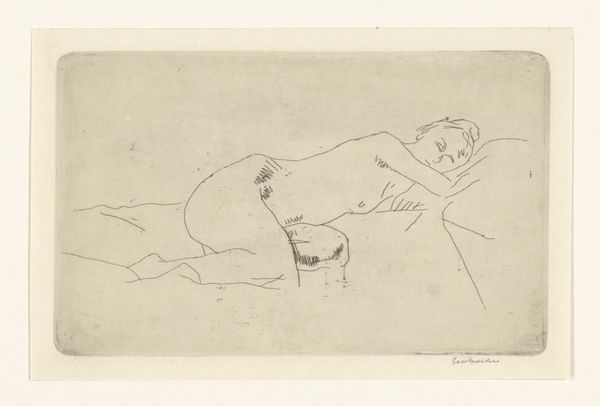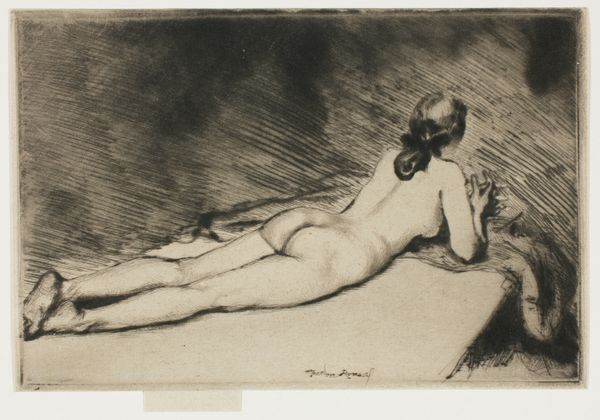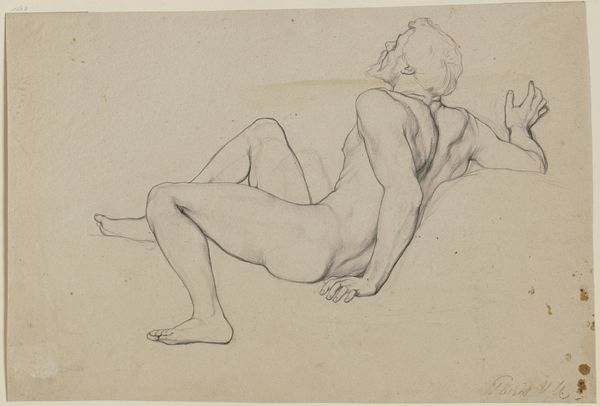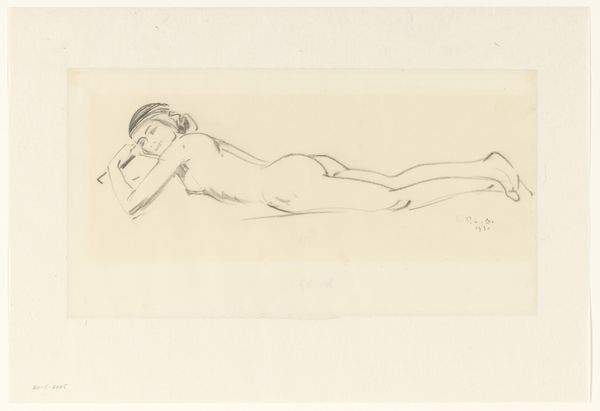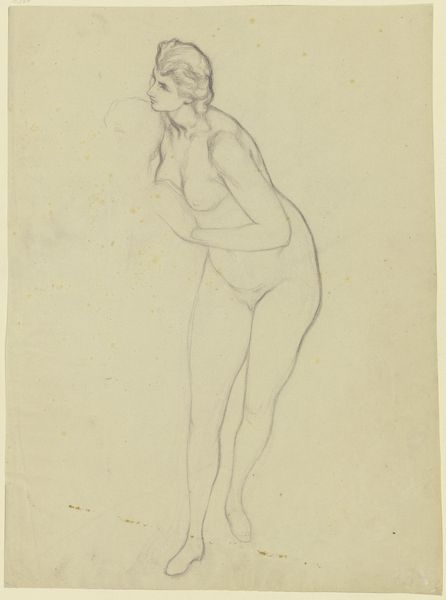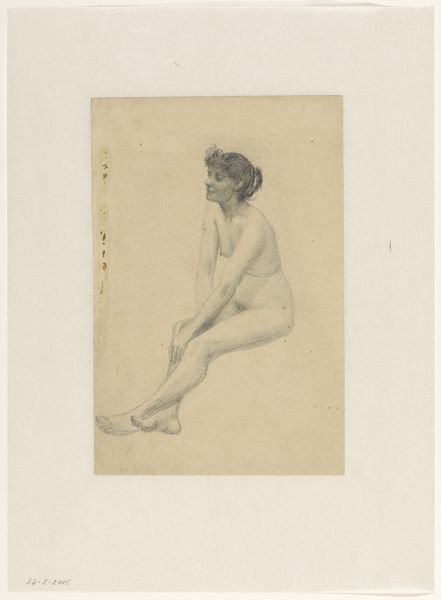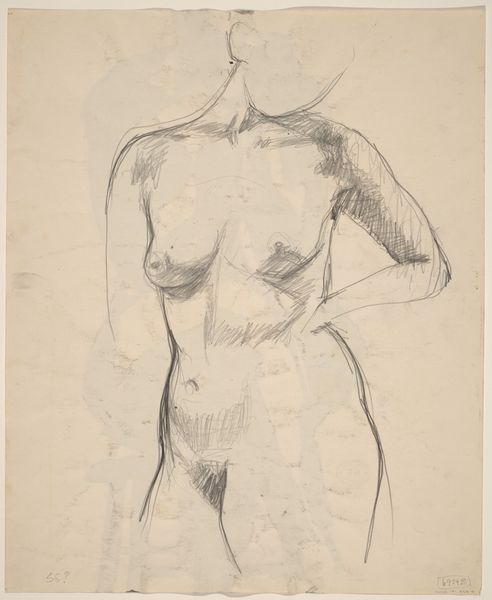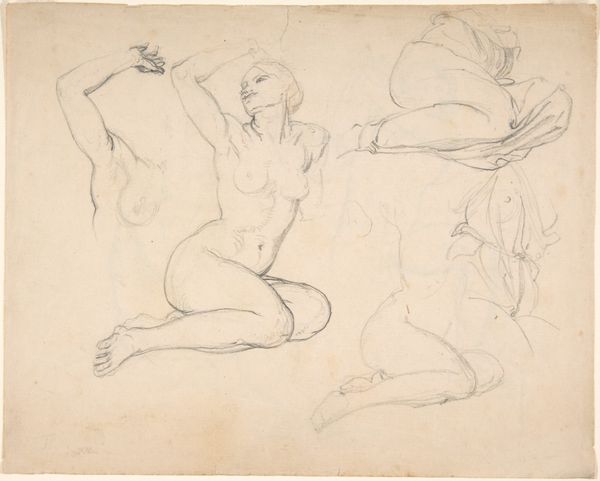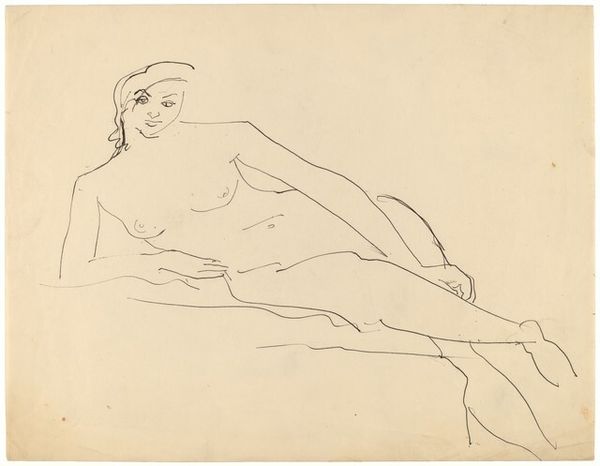
drawing, pencil
#
portrait
#
drawing
#
pencil
#
nude
#
realism
Dimensions: height 250 mm, width 320 mm
Copyright: Rijks Museum: Open Domain
Editor: This drawing, "Liggende naakte vrouw met haar hoofd rustend op een kussen" – or "Reclining Nude Woman with her Head Resting on a Pillow" – was made in 1930 by Armand Rassenfosse. It’s a pencil drawing, and the figure feels very direct, even confrontational, with the way she stares out. What do you see in this piece? Curator: Beyond the realistic rendering, which speaks to a longer tradition of representing the human form, I am particularly drawn to the gaze. The subject’s eyes are almost almond-shaped. Doesn't it evoke something of the ancient world? Consider the pose as well—reclining was a very deliberate compositional choice for centuries in art, particularly associated with Venus and ideas of beauty and leisure. Does it evoke memories of other similar paintings, perhaps those more mythological in nature? Editor: Yes, I can see the Venus comparison. But those images often feel... idealized? Whereas this feels rawer, even though it's such a traditional pose. Curator: Precisely! This tension, between a classical visual language and a more contemporary, perhaps even challenging depiction of female sexuality, is what makes the image so potent. The inclusion of Baudelaire's poetry above, I believe, enhances the subject’s emotional and psychological landscape, it provides an emotional depth to the scene. Editor: So it’s more than just a nude study, it's also a comment on history and culture? Curator: Exactly! And a commentary on the continuous representation and symbolic relevance of certain forms through art. We continue to evolve these motifs over time. Editor: This has given me a lot to consider about historical memory and symbolism. Curator: Me too! Now I’m thinking of other images of reclining women and how their meaning has changed over time.
Comments
No comments
Be the first to comment and join the conversation on the ultimate creative platform.

